Personal Firsts & Lots of Nerves
I am kicking off this new blogging journey with lots of personal firsts! We began with my introduction to the world of flower essences (check it out here if you missed it), and today I’m back with the story of my first brain MRI. Less nature, more tech.
I was super nervous and considered canceling my appointment more times than I’d like to admit. But I gathered up my courage (putting my inner gremlins in the corner for a time out) and the experience turned out to be pretty fascinating.
If you are about to get your own MRI, or are simply MRI-curious, stick with me for the nitty gritty on what an MRI is, why I needed one, and what the process is like. I’ll also give you some tips for battling “first-timer” butterflies. And trust me, it’s not a scary as it sounds!
Disclaimers & Disclosures
The information contained in this article is for general educational and informational purposes only and should not be construed as medical advice. The information provided is not a substitute for advice from a qualified professional who is aware of the facts and circumstances of your individual situation.
While the information provided reflects my personal experience, my research, and what has worked for me, I am not a licensed health practitioner. I expressly recommend that you always consult your own health care professional that is familiar with your medical history before adopting any treatment for a health concern.
All photos appearing in this post are attributed to Pexels photographers, as indicated. Links are NOT affiliated and I am not being compensated for writing this article.
Table of Contents
What Exactly is an MRI?
Let’s break this down. MRI stands for magnetic resonance imaging. Which sounds pretty fancy, huh? And perhaps a little bit sci-fi too. To give you all a good, easy-to-understand overview of what this means, I consulted with the trusty Johns Hopkins Medicine website and they said:
MRI is a noninvasive medical imaging test that produces detailed images of almost every internal structure in the human body, including the organs, bones, muscles and blood vessels. MRI scanners create images of the body using a large magnet and radio waves. No ionizing radiation is produced during an MRI exam, unlike X-rays. These images give your physician important information in diagnosing your medical condition and planning a course of treatment.
Easy enough, right? If you want more of the science, let me know and I’ll happily pull together more in-depth information for a future post.
Why Did I Need an MRI?
Let’s dig into why I needed one of these scans in the first place.
Migraine Disease
While I’ve had a diagnosis of Migraine with and without Aura since 2018, my Neurologist has never sent me for any kind of brain scan. This is because Migraine is considered a “primary headache” type, meaning they are not generally caused by underlying structural abnormalities of the brain. So, an MRI wasn’t necessary for me up to now.
For those of you who don’t know what Migraine is, it is a chronic, debilitating neurological disease with no cure. The American Migraine Foundation reports that this disease affects 39 million people in the United States, and they define “Migraine” as follows:
Migraine is a debilitating neurological disease that is associated with moderate to severe head pain and other symptoms, such as nausea and sensitivities to light and sound. Migraine attacks can be spontaneous or caused by distinct triggers, including stress and certain foods.
There is a lot of nuance to this neurological disease, and the symptoms can be VERY DIFFERENT from patient to patient. But I think it is important to note that Migraine is not “just a bad headache”. You’ll hear me talk more about Migraine in upcoming posts, so if you have specific questions you’d like me to address, send me a note!
Occipital Neuralgia
Now, last year, things changed a bit. I started getting what I would describe as ZAPS, JOLTS, PULSES, or ELECTRIC SHOCKS in the back of my head. They were QUICK, SHARP pains that would occur between my neck and ear, mostly on the left side. They’d come one second and be gone the next. But let me tell you, these pains were FREQUENT.
Sometimes I’d get “zapped” when I turned my head, experienced high stress, had tired eyes, or when I was simply laying down. Other times, the pain would strike for no apparent reason. I’d also get blurred vision, brain fog, and have cognitive issues. I’d notice, or others would point out, that I seemed like I was “grasping” for words, or forgetting them altogether. Definitely NOT a good thing.
Turns out these pains were happening along my occipital nerve, and fit the bill for occipital neuralgia. Something I’d never heard of before. So, as per usual, I did some research. The Cleveland Clinic defines “occipital neuralgia” as follows:
Occipital neuralgia is a headache disorder that affects your occipital nerves. Your occipital nerves are the nerves that run through your scalp. You may experience sharp, stinging or burning sensations on your scalp or behind your eye. Most people experience pain relief with the right treatment.
Occipital neuralgia can occur alongside a more traditional Migraine attack, or completely separately, and lucky me, I get to experience both!
Even with all of that said, my Neurologist was not entirely sure I absolutely needed to get an MRI. With visions of sugar plums, er, I mean tumors, strokes, and aneurisms dancing in my head, we agreed that it wouldn’t hurt to check things out. The MRI would provide a baseline scan for my doctor to review and keep on file, and also give me some much-needed peace of mind.
Preparing for the MRI
My MRI was scheduled for April 16, 2025. When I made the appointment, I expected to be given a whole bunch of guidelines, similar to my cardiac stress test. But I got ZILCH. I managed to pull some information out of the scheduler by asking questions.
Here’s what I figured out:
- Arrive 30 minutes prior to my scheduled appointment (and then try to arrive 15 minutes earlier than that).
- Bring my license; insurance card(s); referral; and a list of medications, vitamins, and/or herbs I’m taking (with dosages).
- Remove my jewelry and anything metal.
- Absolutely no hair clips (again, no metal).
- Wear comfortable clothing (fashion dilemma in the next section).
- Eat and drink as usual, but for comfort, consider keeping my bladder empty beginning an hour before the scan.
- Call and reschedule if I feel sick or uncomfortable on the day of the scan.
The Night Before
The nerves rear their ugly head again! I barely slept because my untamed mind was running rampant about how the MRI process would go. In the morning, I took off all my jewelry, something I NEVER do. It felt so odd, like I was naked! I considered bringing them with me to put right back on after the scan, but ultimately I didn’t want to risk losing anything. So the jewelry stayed safely at home with my runes to keep them company.
Funny Fashion Dilemma
Here’s where things got comical. Or at least I think so. You can tell me if you agree. The only instructions I got for wardrobe were to wear “something comfortable”. Would I be wearing my own clothing, or a hospital gown? I had no clue, so I started pulling together a few different outfits. MRI chic, anyone?
Metal is Everywhere!
As I was grabbing stuff out of my closet, I found myself chuckling because I never realized how much METAL is on clothing and shoes! All of a sudden, I became a detective on a NO METAL quest and let me tell you, it was an uphill battle.
- First, shirts. So many clasps and snaps.
- Second, pants. Zippers, buttons, and metal-tipped drawstrings.
- Third, shoes. My favorite flats had metal studs and bows with hardware.
- Next, sports bras. Surely sports bras would be easy? Nope! Metallic thread, holographic prints, and metal on the straps.
- I even had to check that my hair ties were glued, not connected with metal.
- And last, leggings. But I remembered reading a story about how athletic wear can have hidden metallic threads. Not gonna risk this one.
So, what made the cut?
I landed on all-cotton undergarments, a basic tee, a cotton skirt with elastic waist, and the only pair of shoes I could find without any metal. And I was ready to go!
Travel Fun
For moral support (and a designated driver in case I needed one), my husband agreed to accompany me on this journey. We packed ourselves into the car and I felt good about leaving the house on time (since I’m perpetually 10 minutes late for everything). Of course, the feeling good was short lived.
I had neglected to double check the travel time before we left, and to my dismay, there was a TON of traffic. And not just any traffic, the dreaded SINKHOLE TRAFFIC (if you know, you know). I could feel my blood pressure rising before we were even out of the driveway.
As we made our way inch-by-inch on the highway, my anxiety took turns with my jokes. One moment I was fretting about whether we should call the office to let them know we’d likely be late. And the next moment, I was joking that they should definitely not take my blood pressure when we arrive. Every time I go up to my Neurologist’s office (which is the same building we were going to for the scan), the nurses ask why my blood pressure is so high. And I always say, “Because of the traffic stress!”
Despite the sinkhole backup, we ended up arriving about 10 minutes late (so normal for me). All things considered, it could have been worse. While my nerves (and blood pressure) were shot, at least my sense of humor remained intact!
Arrival & Check-In
Check-in was pretty quick and easy. I showed my license and insurance card, but SURPRISE! They didn’t ask for my referral, nor did they care about my list of medications. Why do they ask for this list if they aren’t going to look at it? And shouldn’t they be checking it? One of the many mysteries that I’ve yet to solve.
Next, I had to sign the HIPAA Notice of Privacy Practices (NPP). Which, as you may know, records that I’ve actually received said Privacy Notice. Except, you know, I didn’t actually receive it. I always have to ask for a copy of this document, which makes no sense. And don’t even get me started on how you can sign the NPP in MyChart, even though the notice itself is never there either. And…when you DO sign things in MyChart, they ask you to sign them AGAIN in-person.
Anyway, after signing the NPP, as well as a hospital release form, it was time to pay for the scan.
The office had called me a few days earlier to tell me how much I would owe and ask if I wanted to pay in advance. I get that some people like this option so they don’t have to deal with it on the day of the appointment, but generally I prefer not to pay for medical testing before I’m actually there ready to get the thing done.
I asked if they could bill me later. But of course, billing me later would require me to sign ANOTHER document, this one accepting financial responsibility. So, I ended up paying by credit card and made sure I got a receipt so I could submit for reimbursement later.
Pre-MRI Safety Screening
As I was finishing check-in, a friendly nurse came to whisk me away. I left my purse and coat with my husband and brought my “extra clothes” bag with me.
The nurse was super nice and let me know that I would be allowed to wear my own clothing for the scan. She wasn’t concerned by anything other than my sports bra. After she confirmed that there were no metal clasps on the straps, she brought me to a small exam room.
I made myself at home on a chair that looked like it belonged in a dental office (similar to what they have in some ER exam rooms), and got ready for the MRI Safety Questionnaire.
In rapid-fire fashion, the nurse asked me a slew of different things about metal, and also went over safety protocols. I tried to remember as many as I could for the list below, but I’m sure I missed a few.
MRI Safety Questionnaire
- Medical History
- Past Surgeries
- Implanted Devices
- Metallic Fragments
- Pregnancy
- Allergies (more relevant for MRI with contrast, which I was not having)
- Kidney Issues (again, more relevant for MRI with contrast, which I was not having)
- Other Medical Conditions
- Removal of Metal & Electronic Things
- Jewelry
- Hair Clips
- Hearing Aids
- Electronic Devices
- Medical Devices
- Dental Implants
- Tattoos
- Piercings
- Implants (for the third time)
- Safety Considerations
- MRI Room
- Screening Questions
- Removing Metal (again)
- Monitoring
- Contrast
- Communication
- Claustrophobia
A Few Things Stood Out
During the safety screening, a few things stood out to me.
- One, I was asked MANY times about metal in my body. By every person I spoke to.
- Two, the nurse asked me about TATTOOS and PIERCINGS multiple times. I have a sneaking suspicion that people forget about nose and/or tongue piercings, or small tattoos. When I told the nurse I don’t have either, she called me a “good girl” and I found that to be a bit inappropriate and judgy. There is nothing wrong with having either, or both! You do you.
- Three, I was asked about BB guns. I’m still laughing about this one. I didn’t know what to say. It didn’t occur to me until later in the evening that she WASN’T ASKING IF I’VE EVER USED a BB gun, but whether I had BB PROJECTILES LODGED INSIDE OF ME. Good thing I don’t. But if you do, make sure you tell them!
Claustrophobia
The final topic on the questionnaire was claustrophobia. I answered: “Yes, I am mildly claustrophobic”. To which the nurse answered, “Hmmm, how are you going to do this?”
Ultimately, she nudged me to say “no” for this question. She told me to share with the MRI Technologist that I’ve never had an MRI, therefore I don’t really know if I’ll be claustrophobic inside the machine. Apparently you must give a definitive “yes” or “no” to each question. No wishy washy responses allowed!
MRI Head Coil
The nurse also walked me through what to expect in the MRI room. She gave me a heads up about the head coil, which is a cage-like structure that is placed over your face. This is specifically used for brain and head MRIs. She noted that some techs skip this warning and the patients freak out when they see it, so I am certainly glad she mentioned it! I’ll describe the head coil in more detail later on and provide a photo. This too, like the MRI itself, is not as scary as it sounds.
MRI Procedure
My next stop was a cozy little waiting area just outside the MRI room. The nurse showed me to a row of wooden lockers for patients to stash their belongings. Since I was allowed to wear my own clothing, I didn’t need to change. I locked up my bag (hotel safe combination lock style), used the conveniently placed restroom, and got myself a drink from the water cooler. Then I settled into one of the chairs to wait my turn.
The wait was short, only about 5–10 minutes. The patient ahead of me emerged from his scan in a classic fabric hospital gown, and the woman after me also had one on. So, how does this work? Does it depend on what area of the body is being scanned? Do you get a gown if you arrive with metal on your clothing? Or do different facilities have different policies? If you’ve had an MRI, let me know in the comments what your dress code was like.
After the MRI bed was cleaned and ready, the MRI Technologist came to get me. She launched into the metal questions again, but didn’t really wait for my answers. I was so busy looking around the MRI room that I found it hard to focus on what she was saying. I simply nodded along and I guess that was good enough!
Not Quite Willy Wonka
The room with the MRI machine was MUCH smaller than I’d imagined it would be. For some reason, I’d pictured something straight out of Willy Wonka and the Chocolate Factory. Like the Television Room. All white with a giant, futuristic white MRI machine in the center of the room. White lights glowing overhead. A tech in crisp, white scrubs operating a computer from behind a plexiglass window.
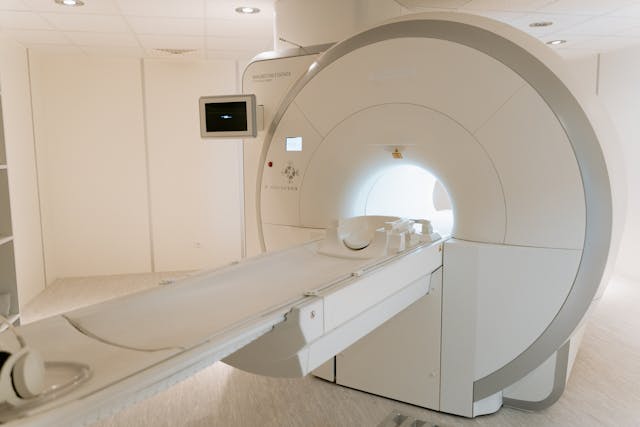
In reality, the swinging wooden doors leading into the room were covered in caution signs. It felt a little bit like a construction zone, but without the construction. The room was mostly taken up by the MRI machine. It was definitely high-tech, but had a typical “medical office” vibe. Nothing Hollywood about it. There were a few carts and tables, and some other random equipment scattered about. It was also quite dark, other than the glow from the machine. The tech was in a tight control room not far from me, rocking blue scrubs, not white!
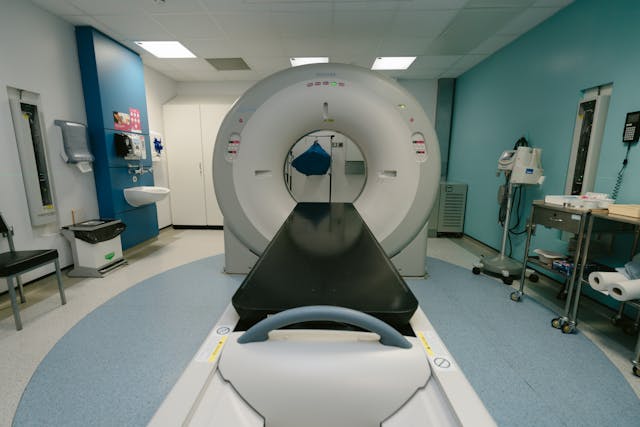
Getting Positioned
Since my scan was in a closed MRI, I made sure to mention my mild claustrophobia to the tech. She said she’d talk me through everything. I put my glasses on a little cart nearby and she had me lay down on the flat machine bed. In hindsight, perhaps my glasses should have gone in the locker with my other stuff since they are partially metal. Good thing they didn’t go flying across the room when the machine turned on!
Because my scan was for the brain, I had to put my head in what I was told was a “neck rest”. But let’s be honest, it looked and felt a lot more like a neck clamp. Not uncomfortable, but definitely rigid, to help keep the head still I’m sure.
Ear Protection
I couldn’t really see anything, so I leaned back and slid my body toward the neck rest to get positioned correctly. The tech tucked a wedge pillow under my knees for extra comfort. She then gave me a pair of bright yellow squishy ear plugs. The kind that expand once they are in your ear canal. Exactly like the ones I used for clay shooting. I hate putting things into my ears, but if I have to do it, these are my top pick.
With my ears all plugged up, the tech asked me what kind of music I wanted to listen to. Of course, I couldn’t really hear her because, well, ear plugs. She got closer and asked again, to which I replied that I prefer rock music. She smiled and put giant white headphones over my ears. Surprisingly, the double ear protection was quite comfortable.
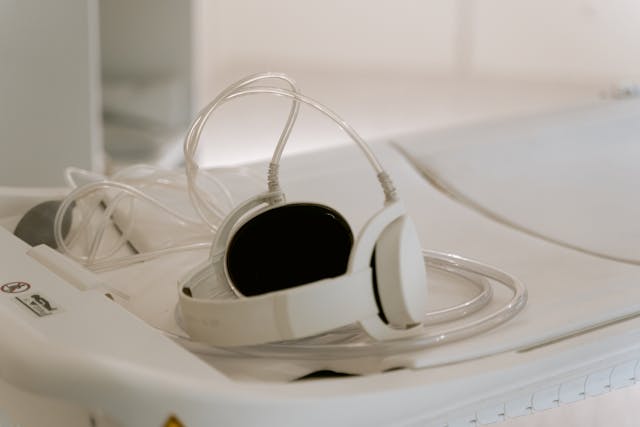
Inside the Head Coil
As the last step before the beginning of the scan, the now infamous “head coil” was placed over my face. I thought it would make me nervous based on the previous nurse’s warning, but instead it made me feel like I was getting ready to go play hockey or blast into space. The best way to describe it is part hockey mask, part astronaut helmet. It definitely got my imagination going!
I found it most relaxing to keep my eyes closed and pretend I was in a spaceship. My curiosity did pique a couple of times and I opened my eyes briefly. And it really did reinforce the space daydream. The holes in the head coil and the bright lights inside the MRI machine put me at ease.
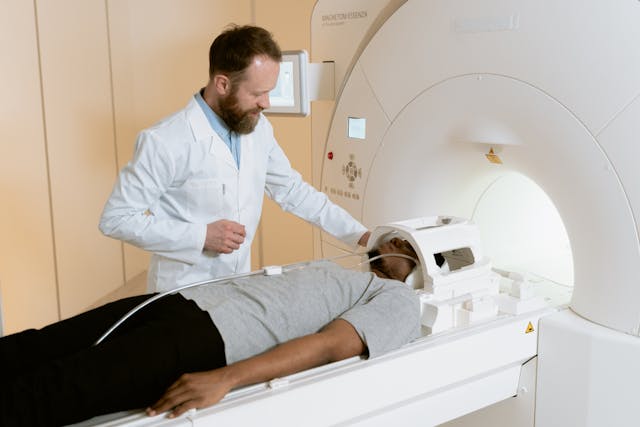
Anyone that tells you an MRI is going to be a dark tunnel is totally wrong, at least in my experience. Inside the machine, everything was white and bright. When I did open my eyes, I could see what looked like spinning lights. There was nothing dark and scary about it at all.
During the Scan
With everything in place, I was ready for my adventure! The MRI tech’s voice came through my headphones, letting me know we’d be starting soon. She placed a “panic button” in my hand, which felt like the pump of a manual blood pressure cuff. She told me to squeeze it if I was feeling uncomfortable or needed a break.
She let me know that the scan would take about 20–30 minutes and then turned the music on. I would argue that her “rock” was more “light FM”, but I found myself paying more attention to the sounds of the machine than the music anyway.
As the scan started, I felt the machine’s bed move slightly toward my feet and then back toward my head. I assume I was pulled into the “tunnel”, however I really had zero awareness of how far in I went. The tech checked in on me a few times during the first 10 minutes of the scan to make sure I was doing ok, which I appreciated.
Sounds
As the scanning began, I heard a lot of “electronic” noises. The machine shook slightly here and there. The music in my headphones seemed loud at some points. And the machine overpowered the music at others. But the headphones worked well, as I didn’t think anything was TOO loud. I actually found myself intrigued by all the different sounds, which was refreshing for someone who can be sound sensitive due to Migraine disease.
I was extremely aware of my own breathing and heartbeat. It’s rare that I get to completely tune into my own body so deeply (I’m working on my meditation practice, but it can be hard to clear my mind).
I became so aware of the tension I’d been holding in my shoulders, chest, and jaw. As I noticed the tension, I was able to focus on slowly relaxing, and had my test been more than 20 minutes, I think I might have fallen asleep!
The sounds continued to change throughout the different stages of the scan, like it was cycling through its own playlist.
- First, I heard what sounded like an inkjet printer.
- Then I heard what reminded me of a construction site.
- Next, it was static on a retro TV.
- After that, there were two rounds of what felt like rock or metal music, followed by a burst of electronica/EDM beats. I imagined myself in a club and had to fight the urge to dance!
- Last, there was a jackhammer. Definitely the loudest part, making me thankful for the double ear protection!
Most of the time, the machine’s “music” was better than the music playing through my headphones. I got my own MRI concert!
Seeing Color
Beyond the sounds, I found myself slipping into a bit of a meditative state. Closed eyes. Just breathing. I started seeing color swirling around. There was a circular aura of light green spiraling inward toward a sky blue center. It reminded me of waves in a pool, flowing toward a point in the distance.
I’m not sure what it all means, but I will have to do some research. You may not know it yet, but I’m a self-proclaimed compulsive researcher. And I’ll definitely be checking out the relationship between MRIs and color breathing. I only saw shades of lime and light green, plus sky and ocean blue. Perhaps a tiny bit of blush pink. No fiery reds or dramatic purples. The palette was peaceful and watery.

After the Scan
I could tell the scan was finished when the table vibrated and shifted like at the beginning. It moved a bit deeper into the tunnel, then back toward my feet. I felt the tech take the panic button from my hand. She removed the head coil from my face and grabbed the headphones.
I sat up a little too quickly and felt a rush of dizziness. I took a few moments to reorient myself, and then put my glasses back on. Once I stood up and my eyes adjusted to the dimmer room lights, I felt perfectly normal.
I collected my stuff from the locker and a different tech kindly walked me back to the waiting room. I reunited with my husband, grabbed my purse and coat, and we went on our merry way.
One of my biggest worries was that I’d end up with ringing in my ears from the MRI machine, but I am happy to report that there was no ringing! I also had no problem driving after the scan.
Later That Day
On our way home, we stopped at a small hospital to drop off some boxes of sharps, because you know, we’ve got to maximize our journeys, especially when we are driving far. But, we found out that they only take two containers at a time. Unrelated to MRI, but now you know! Just in case you need to know.
I worked up an appetite, so I was really hungry by this point in the day. My craving was for a burger, so that’s exactly what we got. With lots of lettuce and pickles for me! Once we got home, I was totally wiped and ended up zonking out. If you’ve made it this far into my story, you might be able to relate 🙂
Waiting & Results
It took about a week for my results to show up in MyChart, but SURPRISE AGAIN! Nobody at my doctor’s office ever called me. I’m sure a lot of you have gone through similar waiting games. Quite often, we have to be our own advocates and chase down results, especially when things come back seemingly “normal”.
The good news? I have a brain! And the radiologist confirmed it’s a normal brain. I must admit, a tiny part of me was hoping they’d find it to be a tad more eccentric. But all kidding aside, nothing abnormal was found. So, while I still have Migraine disease and occipital pain, I don’t have to worry about any worst-case scenarios right now. And that’s fabulous.
Tips for First-Timers
Getting a brain MRI turned out to be much less intimidating than I initially expected. The “scare” factor was low for me once I was there.
Here are some tips to help you navigate your first scan with KNOWLEDGE, POWER, and CONFIDENCE.
- Anxiety & Claustrophobia
- If you are severely claustrophobic, I imagine a head MRI would be tough.
- In these instances, speak to your doctor about medication options.
- For mild anxiety, flower essences and/or homeopathic remedies could help.
- Before You Leave Home
- Check the traffic in advance, so you don’t feel rushed getting to the scan.
- Bring your ID, insurance card(s), and any required paperwork.
- Don’t sign that you received the privacy policy unless you actually got it.
- Clothing & Metal
- You may be able to wear your own clothes, or you might be given a hospital gown.
- Go with the basics for clothing choices and leave your jewelry at home.
- Double check for metal. Keep an eye on bras, shoes, metallic threads, etc.
- If you wear glasses, you will have to remove them for the scan.
- Ask Questions
- Take stock of your surroundings and don’t be afraid to ask questions.
- The nurses and techs don’t mind! They want you to be comfortable.
- Express your concerns rather than pretend you are ok.
- Positivity, humor, and a smile can go a long way. Healthcare providers work long hours and deal with a lot of crabby people, so they appreciate kindness. And it often leads to better care,
- During the Scan
- You will get ear plugs and headphones.
- You will be able to listen to music during the scan.
- You will get a “panic button” to alert the tech if you are having any problems.
- The head coil that goes over your face for brain MRIs is not as bad as it looks. If it helps, look up photos in advance so you aren’t surprised. You can close your eyes before the cage goes on and keep them closed throughout the scan if a “no see” approach is your jam.
- Keep your eyes closed if you are nervous and focus on your breathing and heartbeat.
- The MRI machine is light and bright inside, not a dark tunnel.
- Staying still is nothing to stress about. The setup helps limit your movement. If you need to be completely still or hold your breath, the tech will let you know.
- After the Scan
- Don’t rush to sit up or you may get dizzy.
- You’ll likely be hungry and tired!
- Bring a snack or plan to get your favorite food after. You deserve it!
Accessibility
Before I leave my final thoughts, I think is is important to acknowledge that not everyone has easy access to medical testing, let alone THIS kind of testing. MRIs are expensive, and insurance won’t always cover them. Financial barriers, transportation, access to a doctor that will recommend one, etc., can make them out of reach for many people.
So, I want to recognize how fortunate I am to have had the option to get the MRI. There is privilege in getting baseline testing, as well as peace of mind.
Having said that, I’d love to chat with you if you have accessibility stories related to tests like MRIs. If you are from an organization or have an initiative that is working toward making medical testing more accessible for people, I’d love to hear from you to see if we can partner or collaborate in some way. Please connect!
Final Thoughts
Overall, I found my MRI experience to be interesting and perhaps the most relaxing part of my week. I’m not sure what that says about my life and stress level if getting an MRI was the most relaxing thing I did. But although I was nervous, I am proud of myself for managing my anxiety, being a trooper, and getting through it! And, real talk, it wasn’t bad.
As long as you know what’s going to happen, prepare yourself, and communicate any concerns with the nurses and techs, you’ll do fine.
MRI is probably the least invasive test I’ve ever had. No pain (other than whatever it is that brought you for the MRI in the first place). No needles (unless you get an MRI with contrast, in which case, there will be a needle). It’s mostly noise and some time to relax. And this is coming from someone with Generalized Anxiety Disorder (GAD).
I will take an MRI over mammograms, ultrasounds, and blood tests any day.

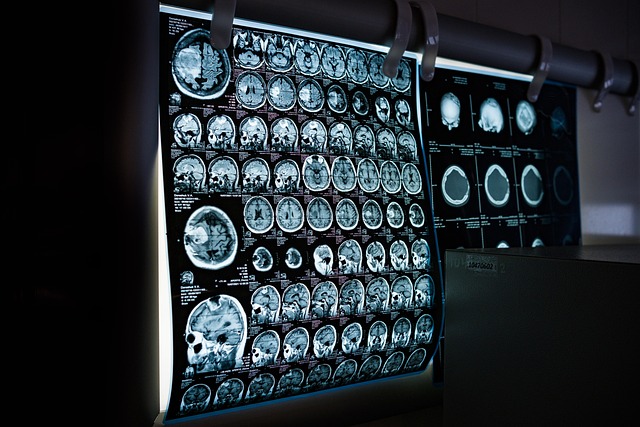



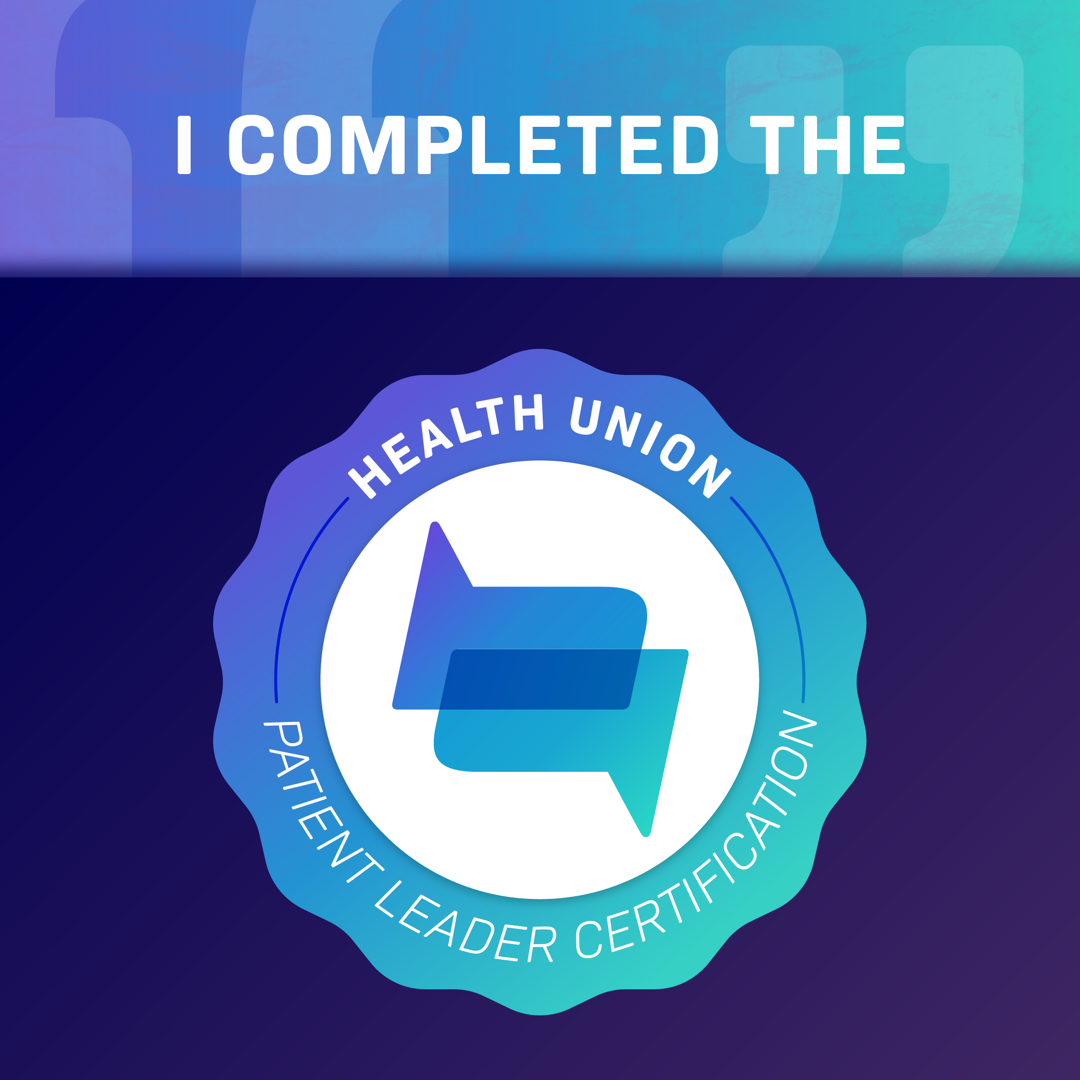
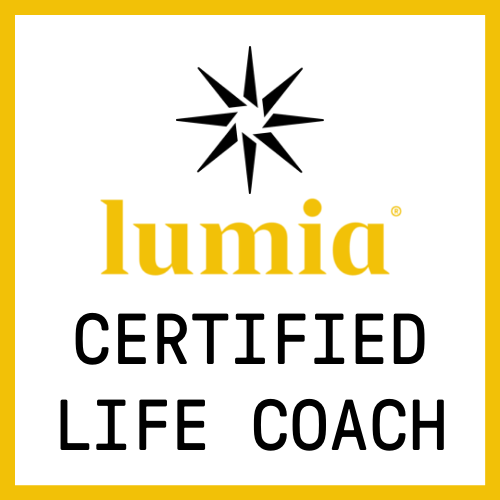
Add comment